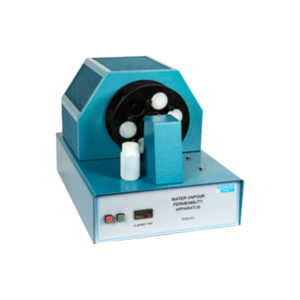Description
This method is a versatile test where two similar laces are abraded together. Laces should be stored in a standard controlled atmosphere for at least 48 hours before testing. One of the two laces used at each of the six stations has both ends of the lace clamped in the carrier provided. The second lace is threaded through the loop created by the first lace. One end of the second lace is fixed to a moving carrier while the other is attached to a weight that tensions the lace to 2.45N.
When the machine is started the action of the moving carrier causes the two laces to abrade. The machine moves each lace a distance of 35mm at a frequency of 60 cycles per minute. Each station has a separate counter and, when a lace breaks, the count is stopped on that station. When all six laces have broken, the machine will stop. STM 439 is provided with hand control for ease of setting and is fully guarded to comply with European Health and Safety requirements.
The same machine can be used to test the abrasion effects of rubbing the lace through a lace carrier or hook, for example eyelets, D-rings, ski hooks and others.






